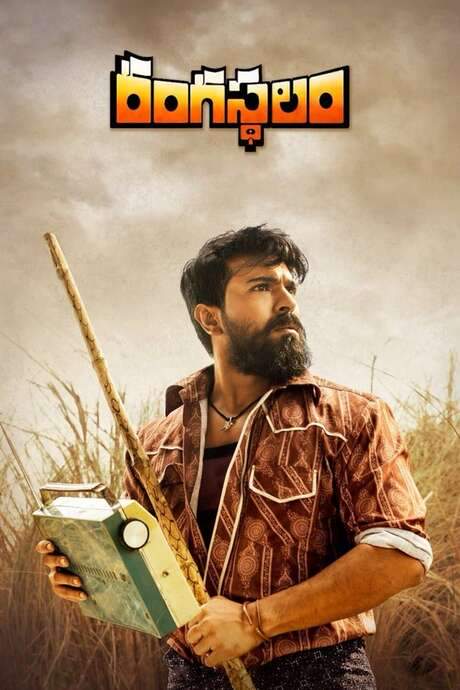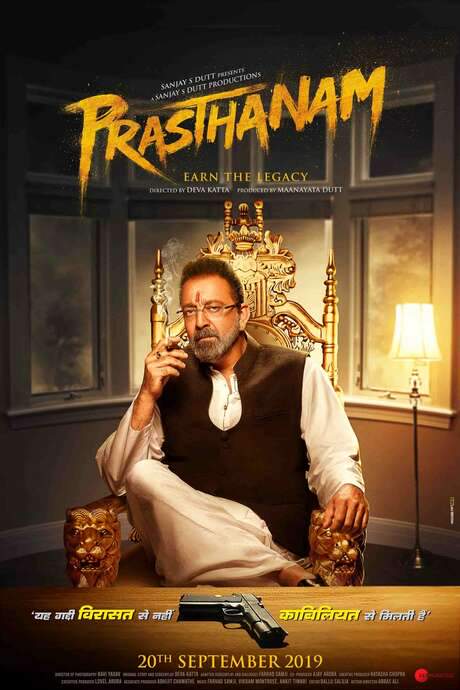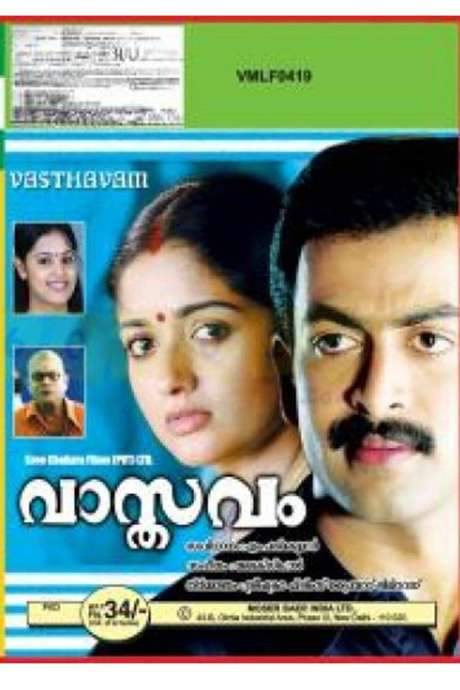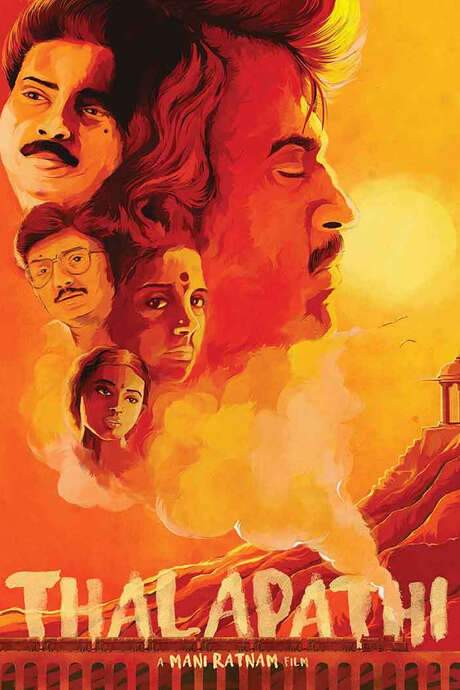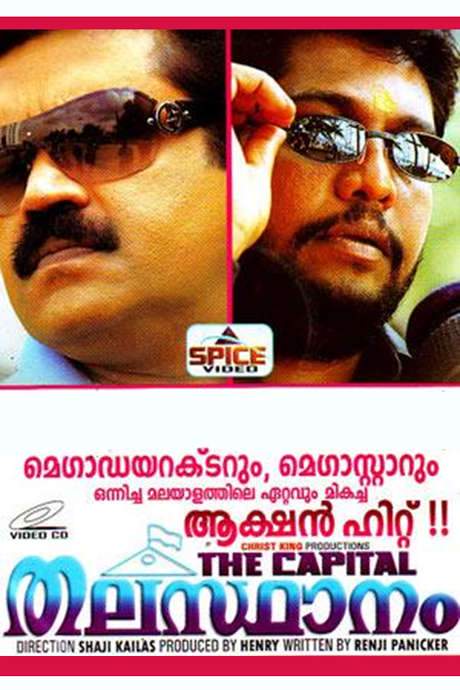
Sthalathe Pradhana Payyans
Year: 1993
Runtime: 149 mins
Language: Malayalam
Director: Shaji Kailas
Goplakrishnan (Jagadish), a bright newspaper boy from Hindustan Colony, enters politics with his friends, runs for office and wins a landslide. He promises free policing and a clean law‑order system. Meanwhile, dynamic young officer Mohammed Iqbal (Siddique) is tasked with purging the capital city of goons and restoring order.
Warning: spoilers below!
Haven’t seen Sthalathe Pradhana Payyans yet? This summary contains major spoilers. Bookmark the page, watch the movie, and come back for the full breakdown. If you're ready, scroll on and relive the story!
Sthalathe Pradhana Payyans (1993) – Full Plot Summary & Ending Explained
Read the complete plot breakdown of Sthalathe Pradhana Payyans (1993), including all key story events, major twists, and the ending explained in detail. Discover what really happened—and what it all means.
In the quiet outskirts of the city lies Hindustan Colony, a dense, close-knit enclave where middle-class and working-class families juggle day-to-day struggles. Here, a long-standing water shortage has become more than a utility problem; it’s a fault line that exposes neglect by those in power and the political calculus that follows. At the heart of this struggle is Gopalakrishnan, an educated young man who works as a newspaper delivery person and moves through life with a calm resolve, surrounded by friends who share his passion for social and cultural life.
Gopalakrishnan’s world is deeply personal as well. He is in love with Gowri, the daughter of Poomukhathu Kurup, a successful but morally shady business contractor who happens to be his uncle as well. Kurup’s wealth and influence cloak a dangerous history: he is implicated in the death of Gopalakrishnan’s father, a fact that fuels a bitter, almost familial enmity between them. The political landscape around Hindustan Colony mirrors this personal history, with Kerala’s state politics in turmoil, factionalism, and party infighting. The Chief Minister, Govinda Menon, struggles to hold onto power against internal rivals, while a wily player named Kunhikannan Nambiar aims to topple the regime and seize control for his own ends.
A catalyst arrives in the form of a sudden ministerial death—Marukandam Madhavan—after an outrageous incident that points to the vulnerability of the ministry. In the scramble to fill the vacancy, Nambiar pushes a loyalist to the fore and insists that the party workers from Hindustan Colony have a say. The result is a startling turn: Gopalakrishnan, who had little political experience, is chosen as a candidate and wins with a sweeping majority, thanks in part to his grassroots appeal and the pressure from the local supporters who believe in him beyond the usual party machinery.
But the political wind shifts quickly. In a strategic move to consolidate power, Nambiar pushes for a ministry and secures Gopalakrishnan’s appointment as the state’s Home Minister. This new position promises to open doors for weapon flow and a tighter grip on the state’s security apparatus, but Gopalakrishnan begins to exercise his authority in ways that surprise his patrons and colleagues. He envisions a policing approach that is more responsive to the people, and Govinda Menon himself begins to see in him a potential ally who can restore order and trust.
Into this volatile mix steps Mohammad Iqbal, a young police commissioner charged with cleaning up the city. Iqbal moves decisively against Nambiar’s goons, arresting them and testing the limits of ministerial authorization and political will. Nambiar counter-moves by pressing the Minister to order the release of the same criminals, trying to turn the tide of public opinion and law enforcement. At the same time, the former plan to ignite communal violence simmers below the surface, as Nambiar attempts to fracture Hindustan Colony along religious lines. It’s in this fraught atmosphere that Subair, Gopalakrishnan’s childhood friend who is on leave from the Indian Army, steps in to mediate the growing tensions and keep the peace, even as the situation spirals toward a broader crisis.
The conflict escalates as police raids target temples and mosques, with authorities uncovering deadly weapons during a crackdown ordered from the Home ministry. The discovery intensifies the political storm and strains already frayed relations within the colony. Nambiar’s machinations bear fruit in the form of violence that erupts in Hindustan Colony, with homes burned and women injured in the clashes. Subair’s sister becomes a central casualty in the chaos, and the community’s fear and anger boil over as the riots spread. Gopalakrishnan finds himself at the center of a growing accusation: am I the architect of a brutal crackdown, or a reformer trying to restore order? The public reaction is swift and vehement, and even those who once backed him question his intentions.
Facing mounting pressure, Gopalakrishnan resigns his post, yet Govinda Menon does not accept the move at first. He urges the Home Minister to demonstrate real strength by exposing the true culprits. In a decisive action that blends street momentum with political leverage, Gopalakrishnan, supported by a mob, storms the stores and garages of Nambiar, seizing explosives and turning the table on the conspirator’s network. The confrontation becomes a dramatic reckoning: Nambiar and his associates are cornered, attacked, and ultimately set ablaze as the community’s anger and a hunger for accountability erupt in a climactic confrontation.
Throughout this sprawling drama, the film threads a meditation on power, loyalty, and the price of reform. It asks how a society should balance the need for strong policing with the rights and safety of its citizens, and whether a political system can be cleansed from within when the answer may demand tough choices, even at the cost of personal relationships and public trust. The characters—each drawn with care and anchored in the city’s bustling, anxious heart—navigate a landscape where water scarcity, corruption, factional rivalries, and communal tension collide, and where a reform-minded leader must decide how far he is willing to go to deliver real change to Hindustan Colony.
Last Updated: October 07, 2025 at 08:46
Unlock the Full Story of Sthalathe Pradhana Payyans
Don't stop at just watching — explore Sthalathe Pradhana Payyans in full detail. From the complete plot summary and scene-by-scene timeline to character breakdowns, thematic analysis, and a deep dive into the ending — every page helps you truly understand what Sthalathe Pradhana Payyans is all about. Plus, discover what's next after the movie.
Sthalathe Pradhana Payyans Timeline
Track the full timeline of Sthalathe Pradhana Payyans with every major event arranged chronologically. Perfect for decoding non-linear storytelling, flashbacks, or parallel narratives with a clear scene-by-scene breakdown.

Similar Movies to Sthalathe Pradhana Payyans
Discover movies like Sthalathe Pradhana Payyans that share similar genres, themes, and storytelling elements. Whether you’re drawn to the atmosphere, character arcs, or plot structure, these curated recommendations will help you explore more films you’ll love.
Explore More About Movie Sthalathe Pradhana Payyans
Sthalathe Pradhana Payyans (1993) Scene-by-Scene Movie Timeline
Sthalathe Pradhana Payyans (1993) Movie Characters, Themes & Settings
Sthalathe Pradhana Payyans (1993) Spoiler-Free Summary & Key Flow
Movies Like Sthalathe Pradhana Payyans – Similar Titles You’ll Enjoy
Rangasthalam (2018) Film Overview & Timeline
Prassthanam (2019) Full Summary & Key Details
Sathyam (2004) Spoiler-Packed Plot Recap
Vaasthavam (2006) Plot Summary & Ending Explained
Thalapathi (1991) Movie Recap & Themes
Prajapathi (2006) Spoiler-Packed Plot Recap
Athirathram (1984) Story Summary & Characters
Sathya (1988) Film Overview & Timeline
Thartharat (1989) Spoiler-Packed Plot Recap
Pada (2022) Full Summary & Key Details
Laththi Charge (2022) Film Overview & Timeline
Thalasthanam (1992) Detailed Story Recap
Thanga Padhakkam (1974) Ending Explained & Film Insights
Janathipathyam (1997) Full Summary & Key Details
Shapath (1997) Ending Explained & Film Insights



